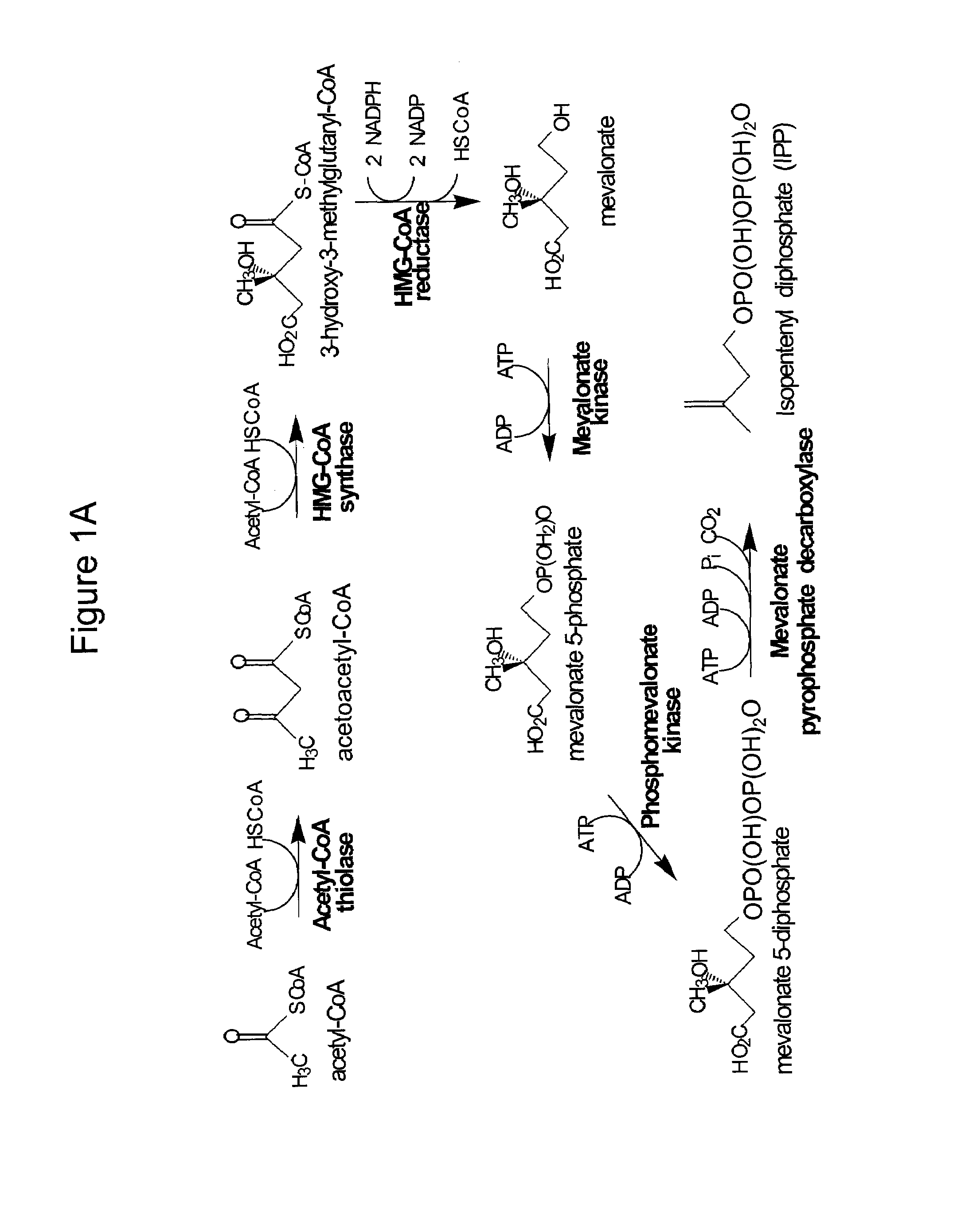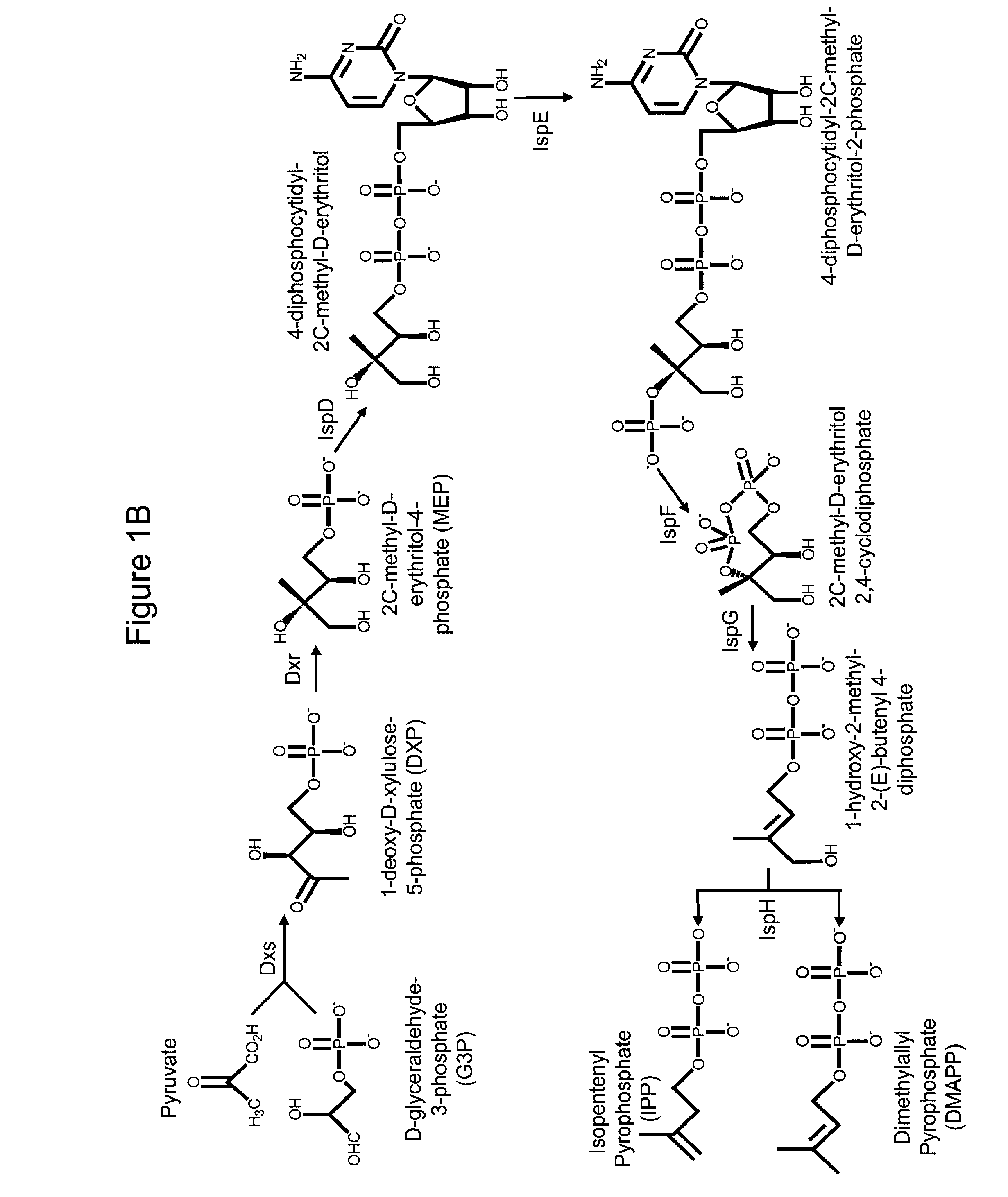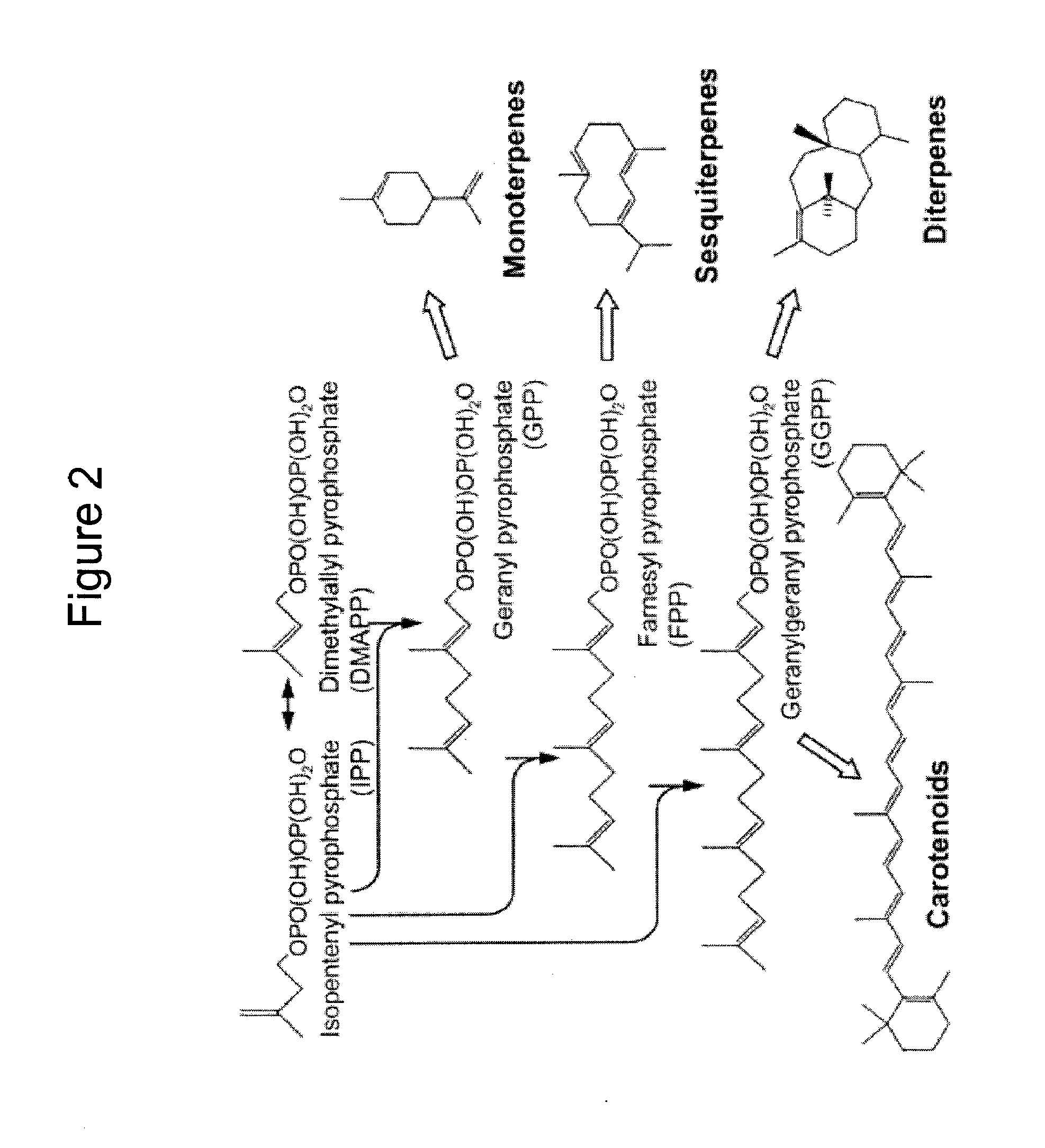Production of isoprenoids
a technology of isoprenoids and isoprenoids, which is applied in the field of isoprenoids, can solve the problems of inability to meet the needs of source organisms in general, low yield by extraction, and accumulation of most isoprenoids, and achieve the effect of robust production of isoprenoids
- Summary
- Abstract
- Description
- Claims
- Application Information
AI Technical Summary
Benefits of technology
Problems solved by technology
Method used
Image
Examples
example 1
[0236]This example describes methods for making expression plasmids that encode for enzymes including enzymes of the MEV pathway from Saccharomyces cerevisiae organized in operons.
[0237]Expression plasmid pMevT was generated by inserting the MevT operon (SEQ ID NO: 1) into the pBAD33 vector. The MevT operon encodes the set of MEV pathway enzymes that together transform the ubiquitous precursor acetyl-CoA to (R)-mevalonate, namely acetoacetyl-CoA thiolase, HMG-CoA synthase, and HMG-CoA reductase. The MevT operon was generated by PCR amplifying from Escherichia coli genomic DNA the coding sequence of the atoB gene (GenBank accession number NC—000913 REGION: 2324131 . . . 2325315) (encodes an acetoacetyl-CoA thiolase), from Saccharomyces cerevisiae genomic DNA the coding sequence of the ERG13 gene (GenBank accession number X96617, REGION: 220 . . . 1695) (encodes a HMG-CoA synthase), and from Saccharomyces cerevisiae genomic DNA a segment of the coding region of the HMG1 gene (GenBank ...
example 2
[0245]This example describes methods for making expression vectors encoding enzymes including enzymes of the MEV pathway from Staphylococcus aureus organized in operons.
[0246]Expression plasmid pAM41 was derived from expression plasmid pAM25 by replacing the coding sequence of the HMG1 gene, which encodes the Saccharomyces cerevisiae HMG-CoA reductase, with the coding sequence of the mvaA gene, which encodes the Staphylococcus aureus HMG-CoA reductase (GenBank accession number BA000017, REGION: 2688925 . . . 2687648). The coding sequence of the mvaA gene was PCR amplified from Staphylococcus aureus subsp. aureus (ATCC 70069) genomic DNA using primers 4-49 mvaA SpeI (SEQ ID NO: 2) and 4-49 mvaAR XbaI (SEQ ID NO: 3), the amplified DNA fragment was digested to completion using SpeI restriction enzyme, the reaction mixture was resolved by gel electrophoresis, and the approximately 1.3 kb DNA fragment was gel extracted. The HMG1 coding sequence was removed from pAM25 by digesting the pla...
example 3
[0252]This example describes methods for making expression vectors that encode enzymes including enzymes of the MEV pathway from Enterococcus faecalis organized in operons.
[0253]Plasmid pAM16 was generated by inserting the coding sequence of the mvaE gene of Enterococcus faecalis (GenBank accession number AF290092 REGION: 1479 . . . 3890) (encodes an acetyl-CoA acetyltransferase / HMG-CoA reductase (HMGR)) into the pBlueScripII-KS(+) vector. The coding sequence of the mvaE gene was PCR amplified from Enterococcus faecalis genomic DNA (ATCC 700802) using 5′ phosphorylated primers 4-40 mvaEF BamHI (SEQ ID NO: 11) and 4-40 mvaERHindIII (SEQ ID NO: 12). (Note that primer 4-40 mvaEF BamHI changes the start codon of the mvaE gene from TTG to ATG in the amplified PCR product.) The resulting PCR product was ligated into the SmaI restriction enzyme site of pBlueScripII-KS(+) (Stratagene, La Jolla, Calif.), yielding expression plasmid pAM16.
[0254]Plasmid pAM18 was generated by inserting the cod...
PUM
| Property | Measurement | Unit |
|---|---|---|
| temperature | aaaaa | aaaaa |
| temperature | aaaaa | aaaaa |
| temperature | aaaaa | aaaaa |
Abstract
Description
Claims
Application Information
 Login to View More
Login to View More - R&D
- Intellectual Property
- Life Sciences
- Materials
- Tech Scout
- Unparalleled Data Quality
- Higher Quality Content
- 60% Fewer Hallucinations
Browse by: Latest US Patents, China's latest patents, Technical Efficacy Thesaurus, Application Domain, Technology Topic, Popular Technical Reports.
© 2025 PatSnap. All rights reserved.Legal|Privacy policy|Modern Slavery Act Transparency Statement|Sitemap|About US| Contact US: help@patsnap.com



